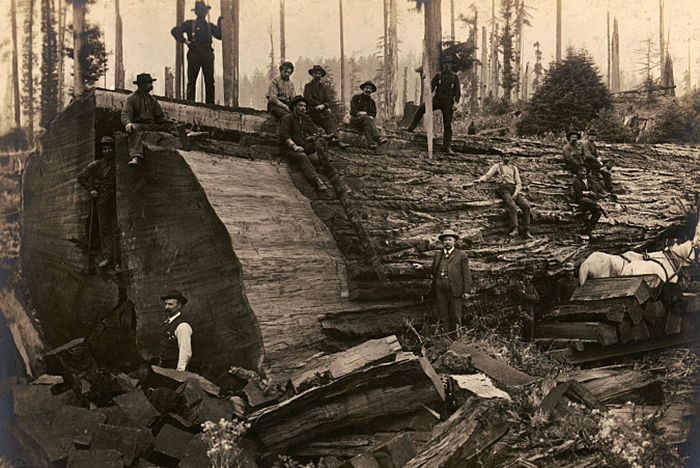Redwood Lumber (rehd-wud luhm-br)
Redwood lumber is exported from the Wyrmwood forest in the Kingdom of Havenwood, and is prized in building for its light weight, beauty, ability to absorb water, and resist decay and fire.
Properties
Material Characteristics
The appearance of a redwood plank varies depending on the type of wood used. Heartwood color can range from a light pinkish brown to a deep reddish-brown, while sapwood is a pale white/yellow. Grain is generally straight, though figured pieces may be wavy or irregular. Redwood has a coarse texture and low natural luster, though it can polish up well when treated.
Physical & Chemical Properties
Redwood lumber is very soft and lightweight, with a decent strength-to-weight ratio. It is also exceptionally stable, with very little shrinkage or seasonal movement. It is easy to work with either hand tools or machinery, though some tearing can occur with curvy or irregular grain.
Geology & Geography
Redwood trees suitable for harvest grow around the Emerald Sea in western Omath, where heavy rainfall and cool, damp air create a unique environment for these trees.
Origin & Source
Life & Expiration
Redwood can last for decades or centuries when treated well. Application of finish or sealant can prolong the expected lifespan of redwood to five hundred years or more.
History & Usage
Everyday use
Due to its resistance to decay, it is frequently used in bridges, trestles, and housing. Burls, the knobby growths found on trees, are used to make high-quality furniture such as tables, desks, and mantels, as well as turned goods and musical instruments.
Manufacturing & Products
Using axes and long, double-handled crosscut saws, often over thirty feet (nine meters) in length, the loggers bring down a redwood tree, sometimes taking up to a week for a single tree, then set upon it to strip its branches and bark, and divided it into manageable length logs for transportation to a mill, either dragging it by horse or oxen along skid roads.
Sawmills use a single blade moved up and down by a crank, then a longer sash saw, then the sashgang saw which has two or more saws in the sash cutting at the same time. Saws to cut redwood have to be made stronger and more durable than saws used elsewhere, requiring smiths to have a great deal of skill.
Hazards
While milling redwood lumber itself is not particularly dangerous, outside of the machinery used, the process of felling redwood trees is significantly dangerous. Tools used for felling the massive trees were designed for smaller trees found in Falcrest and on the Dunmaer Plateau, and so loggers will often stand inside the cuts they make in order to continue the process.
With shallow root systems, redwoods are prone to windfall, and a tree that has been cut is even more likely to fall in moderate winds. Many loggers have been caught off guard when a tree falls onto the cut they are standing in. Certain trees, called 'widowmakers' by the loggers who work them, shatter when they fall, casting sharp debris in every direction.
Distribution
Trade & Market
The Havenwood Lumber Consortium owns the largest share of the market for redwood lumber, shipping it from its various camps and mills surrounding the Wyrmwood.
The time and effort it takes to process a single redwood into lumber keep the value high, a fact that the Consortium exploits.
Storage
Redwood lumber can be kept in the open, though its ability to absorb water often necessitates storage in a dry warehouse or under waterproofed canvas.
Type
Wood
Value
High
Rarity
Uncommon/Rare
Odor
Mild spice, with underlying earthtones and a tinge of sweetness
Color
Cherry red to dark reddish-brown
Density
26 lbs/ft3 (415 kg/m3)
Common State
Solid
Related Species
Related Items
Related Technologies




Comments